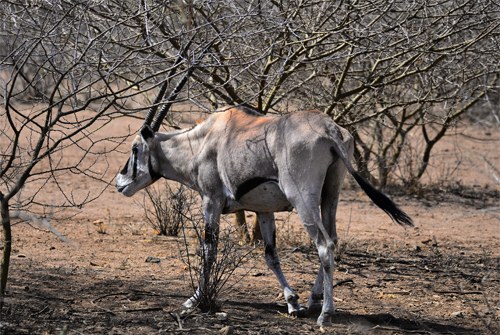Climate Change, Biodiversity Early Warning Systems, and Africa’s Future
By Phoebe Barnard
There can be no denying it: climate change is a fact of life in Africa, and has been for millennia. But it won’t get easier for most of us. Expanding deserts, encroaching woodlands, drying wetlands and aquifers, and rising sea levels in acidifying seas are all expected to shape our beloved Africa for many decades, even centuries, to come. We can expect that these biome shifts and changes in water availability will profoundly shape where people, and plants and other animals, settle across the landscape…. changes which will happen gradually, and sometimes violently and abruptly, across the whole continent. And if we do not anticipate and adapt to these changes proactively, this may fairly quickly destabilize our economies, our countries, and our productivity as a continent.
In general, dry areas will get drier and wet areas wetter; low-lying areas will become submerged; high-altitude areas may become starved of the cloud layers and glaciers that have nourished them with rainfall and runoff since the dawn of the memory of humankind. We need to come to terms with the fact that water will be scarce, and often of very poor quality, in most places, until we figure out a low-carbon, appropriate-technology way to desalinize seawater. And in other places, it will not be our friend – it will bucket down violently, raising rivers to swollen bursting-points, eroding soil by the thousands of tons, and carrying off homes, children and livestock. It’s tragic and the stuff of nightmares, but it can and will happen increasingly - unless, of course, we are prepared.
So what’s the easiest way for Africa to prepare for adaptation to climate change? There is no one silver bullet. We need all the tools at our disposal – community activism, agricultural outreach, proactive education, climate forecasting, satellite surveillance and ecosystem mapping, economic diversification, and various types of early warning systems at local, national and regional levels.
 |
|
Emaciated oryx in the drought-hit Awash National Park, Ethiopia. Photo credit: Ludwig Siege. |
Early warning systems for biodiversity
Throughout the world, developed nations are familiar with various types of early warning systems: for tsunamis, for hurricanes and tornadoes, for drought, for disease outbreaks, for economic shocks. We need to apply these concertedly to the challenges of climate change, and what it means for countries and households.
Southern Africa has been pioneering the use of integrated early warning systems for biodiversity over the past decade or two. Namibia, the driest country in sub-Saharan Africa, has desertification early warning systems, and the core elements of a biodiversity early warning system, to help support its Constitutional commitment to sustainable development. Namibia’s Constitution is particularly progressive, by protecting biodiversity, essential ecological functions, and the principles of sustainable use of natural resources and the banning of toxic or nuclear waste dumping. So it is perhaps not surprising that it spent some time developing a biodiversity information system and the basis for monitoring species and ecosystem health through the EMIN (Environmental Monitoring and Indicators Network), a kind of biodiversity early warning system.
In South Africa, the extensive popularity of citizen science biodiversity data collection projects such as SABAP2, the Southern African Bird Atlas Project 2, has allowed for the development of a biodiversity early warning system as a very vigorous partnership between the South African National Biodiversity Institute (SANBI), the Animal Demography Unit (ADU) of the University of Cape Town, and conservation and taxonomic special interest groups such as BirdLife South Africa or the Lepidopterists’ Society of Africa (reviewed by Barnard et al. 2016).
Biodiversity early warning systems are rare in the world, perhaps confined to southern Africa – although similar programs have developed elsewhere. The key features of effective early warning systems are:
(a) An explicit science/ policy/ planning/ implementation interface;
(b) Scientifically grounded, simple and robust methods (protocols) for data collection;
(c) Statistically robust trends analysis and uncertainty assessment;
(d) Usually, the combination of citizen science and academic science for detailed analysis of large-scale or long-term datasets, such as species atlases.
Countries with the best opportunity for adapting proactively to climate change will be those which have a good, balanced and proactive toolkit for societal and biological adaptation. Southern Africa, with its excellent policy framework, its active networks of amateur biodiversity enthusiasts, its good universities and scientific research history, is relatively well set on this path.
Phoebe Barnard is Executive Director, Pacific Biodiversity Institute, PO Box 298, Winthrop, Washington, USA